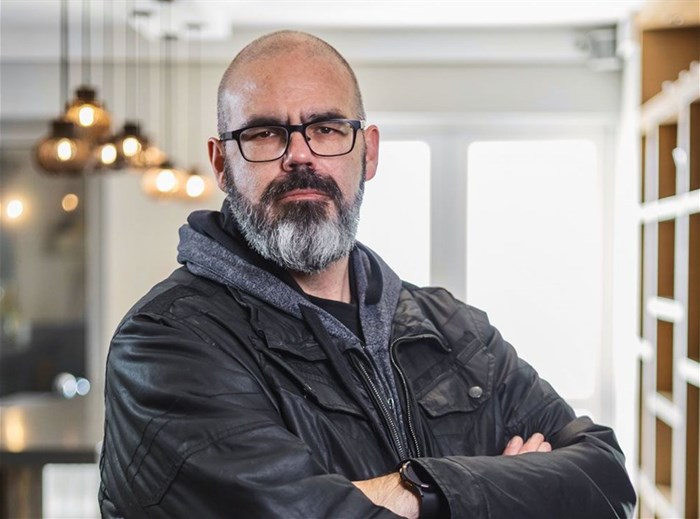Over half of participants in 12-week vaping trial quit smoking

These were just some of the notable results of a challenge dubbed ‘Mzansi Make the Switch’, run by consumer advocacy group Vaping Saved My Life (VSML).
In a follow-up survey conducted a few weeks after the 12-week challenge period had ended, 41% of respondents were still not smoking. Among those who had relapsed, 46% said that although they still smoked a little, it was a small fraction of their prior consumption and they felt optimistic about their ability to successfully quit in the future using vaping products.
All of the close-out survey participants said they would recommend switching to vaping to friends or family members who smoke as a means of reducing their harm exposure or helping them to quit smoking entirely. In the future, 68% indicated they would carry on vaping, 18% would be smoking and vaping and 14% would just be smoking.
“Smoking cessation is the goal of at least 66% of the 11.1 million South Africans over the age of 15 who smoke,” says VSML co-founder Kurt Yeo, himself an ex-smoker who successfully made the switch to vaping. “Unfortunately, due to a lack of public smoking cessation services and products, many are destined to fail, with only 3% to 5% ever achieving complete abstinence by relying on the ‘cold turkey*’ approach.”
“Countries around the world have struggled for decades in tackling this extremely dangerous and stubborn habit with varying degrees of success, but none have reached the elusive smoke-free status of 5%. The answer will not be found in restrictions, excise taxes and approved cessation methods but a concept that proved instrumental in the fight against other non-communicable threats to public health: harm reduction,” he explains.
Yeo points out that vaping and other less harmful nicotine products do just that, by offering the same desired effect and eliminating the harm as much as possible. “Harm reduction does not rely only on a product or behavioural substitutes, but requires accurate and truthful information, empowering the user to make informed decisions. The now-proven strategy of harm reduction acknowledges that, for some, the leap to complete abstinence is too great and the next-best approach is to reduce the harmful consequences of their choices.”
The results of the ‘Mzansi Make the Switch’ social experiment illustrate that vaping may play an important role in supporting smokers’ desire to quit smoking, avoid relapse or reduce their smoking. Additionally, as participants also reported feeling significant enhancements in their health, this demonstrates that vaping should be further explored as a potentially feasible method for harm reduction in South Africa.
However, the Tobacco Products & Electronic Delivery Systems Control Bill of 2022, which has been tabled in Parliament, makes no distinction in its treatment of vaping and smoking despite their vastly different risk profiles, and ignores the wealth of evidence supporting vaping as an effective pathway out of smoking.
In the 12-week trial (approximately 90 days), 36 smokers were initially supplied with vaping devices and refills. They also received mentorship and support throughout the challenge period to help them reduce their smoking or give up entirely.
The participants reported that they had smoked for an average of 23 years and only 17% had never tried to quit before. The vast majority (94%) cited health concerns as their primary reason for wanting to quit this time around and 58% said the cost of smoking.
Ten out of the original 36 participants withdrew from the challenge, either because they were concerned about the cost of vaping compared to cigarettes, or because they found vaping unsatisfactory.
However, those who were able to switch entirely to vaping immediately reported perceived improvements in their health. Participants also reported relief from adverse symptoms of smoking, such as headaches, nausea and dizziness.
Over the course of the 12 weeks, participants experimented with different devices, flavours and nicotine strengths to find the optimal combination for their needs.
By the end of the period, 58% of participants had quit their smoking habit entirely, while 79% of those who had not managed to give up cigarettes reported a reduction in their consumption.
“While this trial wasn’t intended to be a rigorous scientific study, the results tally with a wealth of scientific evidence showing that vaping is one of the most effective methods for smokers to give up cigarettes by allowing them to get their nicotine fix while dramatically reducing the impact on their health,” notes Yeo.
“Moreover, it shows the folly of lumping vaping and smoking in the same category, as the Tobacco Products & Electronic Delivery Systems Control Bill aims to do, instead of adopting a harm-reduction strategy like governments have done around the world. This includes the UK, which has introduced a ‘Swap-to-Stop’ programme offering free vapes to smokers as a way of helping them to quit,” he concludes.
To help South Africans have their concerns about the Bill heard, VSML has developed an online submission form which is delivered directly to Parliament. To make a submission, visit www.vsml.co.za/submission-bill-2022.
- Cybersecurity Awareness Month: PR dos and don’ts for a company data breach 25 Oct 2024
- Hook, Line & Sinker wins international award for Creative PR and Communications Experts of the Year 15 Oct 2024
- Business Partners Limited appoints Hook, Line & Sinker 28 Aug 2024
- Radisson Hotel Group appoints Hook, Line & Sinker 21 Aug 2024
- Cisco appoints PR agency, Hook, Line & Sinker 12 Jun 2024
 | Hook, Line & SinkerMeet South Africa’s Best Small PR Consultancy of 2023. Innovative and award winning, HLS provides integrated PR & Marketing services to local and global power brands across Africa, the Middle East, and Europe. This is done by developing newsworthy and engaging content to HOOK audiences, selecting the best platforms & communications LINE, to deliver the ultimate campaign SINKER. |